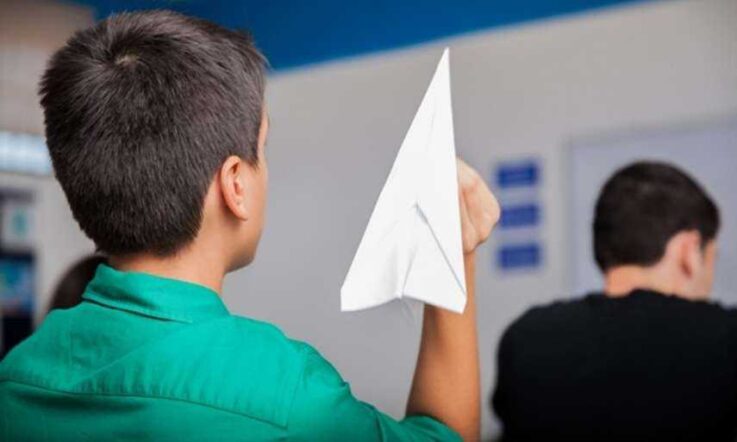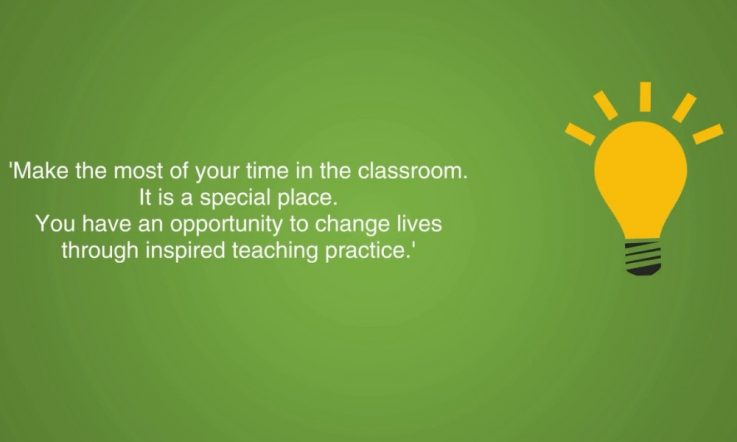This is an edited version of an article that was originally published in the March 2010 print edition of Teacher.
In schools across Australia there are educators avoiding having difficult conversations with their colleagues. Debra Ferguson offers some tips on how to get those conversations started.
We’re none of us alone if there are times when we need to have a difficult conversation with a colleague because what’s happening is destructive, but we avoid it because ‘it’s the wrong time’ or ‘maybe it will get better.’
The result? The problem festers inside, we become resentful in our silence and make the situation bigger than it really is. It’s actually normal to feel like this, because the issue is important to us and the outcome uncertain.
Difficult conversations take us out of our comfort zone and require courage, but there are huge rewards: not least a solution to the problem, but often also a stronger relationship with your erstwhile nemesis, not to mention more confidence and respect, and both you and your work colleague may learn things you didn’t know before.
Okay, it’s worth having those difficult conversations we often avoid, but how do you do it? Meet Sarah. She’s Mary’s head of department and she’s concerned about Mary’s negative attitude to pretty much everything. At the slightest hint of change, or department members trying something new, Mary lets loose, sighing loudly, rolling her eyes and following up by talking behind Sarah’s back, undermining her efforts.
People like Mary as a person, but her attitude has become so negative, it’s affecting the department. Sarah knows she has to do something, for the wellbeing of the department. She has a difficult conversation ahead, so she needs to prepare herself.
Preparation
First, Sarah has to ask herself what she knows about the conflict. What are her feelings? How does she see herself, her identity? How has she got to this point?
Then Sarah has to ask herself what she doesn’t know. What’s Mary’s perspective? What are her feelings? What are her possible intentions? By being curious about Mary, Sarah is better able to begin negotiating; she has some insight into Mary’s story.
Sarah then needs to identify a goal that is possible to reach. Very often we begin a difficult conversation without knowing where we want to end up.
Next, she needs to make enough time for the conversation itself. This demonstrates to Mary that she has invested in finding a solution for them both. Conflict management on the run just doesn’t work. If it’s that important to Sarah, she has to make the time.
Sarah and Mary also need time because there’ll be a fair bit of decoding going on since each difficult conversation is really three conversations about what has happened for them, what they feel, and how they see themselves in terms of self-esteem and self-image.
Next, Sarah needs to make sure she has removed any residual urge to blame Mary for her behaviour and attitude, since the aim is to negotiate a solution, not determine who is right or wrong. The less Sarah plays the blame game, the more she relieves Mary of the need to defend herself, and the easier it becomes for Mary to negotiate a solution.
The hard part about not playing the blame game, for Sarah, is that it has to be genuine. Sarah has to look at her own actions to determine how she has contributed to the conflict. In Sarah’s case, her silence has allowed the situation to escalate.
To take blame out of the situation, she also has to take Mary’s intentions, or more precisely her assumptions about Mary’s intentions, out of the picture. To do that, she has to come to the conversation prepared to learn new things about the situation.
Finally, Sarah needs to accept that her feelings are part of the conflict, so that she can express how she feels when she has the conversation, for the purpose of recognising those feeling, but not dwelling on them. She’s also going to feel nervous, so it’s a good idea to rehearse. Rehearsing with a trusted colleague also helps Sarah identify where she wants the conversation to go.
The measure of success in that rehearsal is whether she can change her stance from trying to deliver a message to trying to understand. She needs to know what has happened from Mary’s point of view and share her feelings about this so they can work together to figure out a way to move on.
Being curious about the other person is one of the most powerful stances you can take in a difficult conversation. Certainty locks Sarah out of Mary’s story, while curiosity lets her in. Sarah has her story and Mary has hers, but Sarah doesn’t have to give up her story to understand Mary’s.
Both can make sense because their stories are based on different interpretations and information. The purpose of hearing both stories is not to choose between them, but to share them in order to understand how both feel.
It’s helpful if Sarah asks what is the story she is telling herself, what is missing from her story and what is Mary’s story? So, Sarah has made a time for a meeting with Mary in which she’s not interested in playing the blame game, has rehearsed and is curious to learn Mary’s story so that together they can find a solution. Now she just has to have the conversation.
Having the conversation
First, she has to extend an invitation to Mary. She describes her purpose and lets Mary know what is her goal. It’s important that she invites Mary, rather than imposing a meeting, so that Mary is aware that she is a partner in figuring out a solution.
In the meeting, Sarah’s core question is, ‘If you were in my shoes, what would you do about this situation?’ but she finds herself jumping to conclusions again and not really listening to Mary. She reminds herself to be curious, to ask open-ended questions like, ‘What leads you to say that?’ and ‘How do you see it?’ that enable Mary to articulate her story.
That enables Mary to explain that she finds change difficult, and feels threatened and undermined by the new, young teachers who have come into the department.
Unsurprisingly, she also explains that she was unaware of the impact of her attitude on others, including Sarah.
They both agreed to behave differently. Sarah realises that Mary is not going to embrace change after one meeting, and modifies her goals. Together, they decide that Mary will have a private conversation with Sarah when she feels frustrated, and that Sarah will be more open in her communication with Mary and the department.
They end the conversation feeling closer as colleagues and having more empathy for each other.
While this difficult conversation with Mary remained a difficult conversation, Sarah is relieved that she made the effort.
What was detracting her from her focus and her department’s wellbeing is now being managed. Mary feels more understood, and less threatened and undermined. Not all difficult conversations end happily, and not all difficult conversations end with a solution after one go at it. Sometimes it takes several attempts to change behaviours or attitudes. Pick your battles, be sure of your goals, get rid of blame and judgements, use big doses of empathy and curiosity and don’t forget: practise, practise, practise.
Give it a go; think about how good you’ll feel by broaching the subject. It’s worth the effort.
Links
Much of this article on difficult conversation, negotiation and conflict resolution draws on the work of the Harvard Negotiation Project. For more information on this, visit: www.pon.harvard.edu/category/daily/negotiation/?cid=13
Further reading
Bolton, R. (1986). People Skills. New York: Simon & Schuster.
Clarke, J. (2005), Working With Monsters. Sydney: Random House.
de Bono, E. (2004) How to Have a Beautiful Mind. London: Random House.
Goleman, D. (1998). Working With Emotional Intelligence. New York: Bantam Books.
McCarthy, P., Rylance, J., Bennett, R., & Zimmerman, H. (2001). Bullying from Backyard to Boardroom. Sydney: Federation Press.
Stone, D., Patton, B., & Heen, S. Difficult Conversations: How to discuss what matters most. (1999). London: Penguin.
This is an edited version of an article that was originally published in the March 2010 print edition of Teacher. The author biography remains unchanged and may not be accurate at this point in time.



